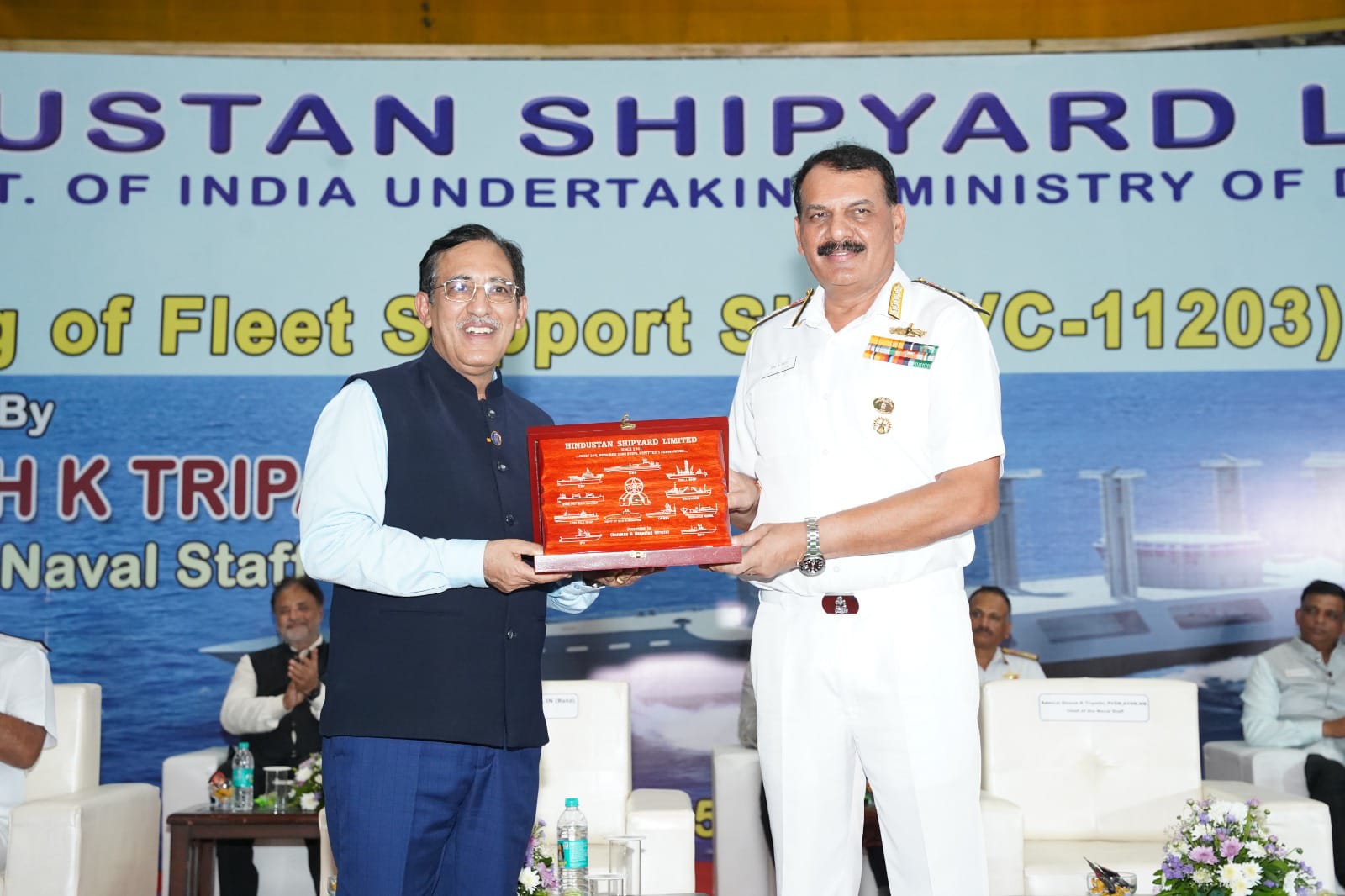India’s oldest shipbuilder, Hindustan Shipyard Limited (HSL), recently marked its 85th anniversary with a steel-cutting ceremony. that speaks volumes about India’s growing maritime ambitions.
On the day of the 85th anniversary celebrations, June 19, Admiral Dinesh K Tripathi, Chief of Naval Staff, initiated the construction of the Indian Navy’s fourth Fleet Support Ship (FSS).
For HSL, the day cemented a remarkable comeback story and aligned with India’s effort to build a self-reliant, blue-water navy capable of projecting sustained power across the Indo-Pacific.

What is the fourth Fleet Support Ship?
The fourth FSS, whose construction has now formally begun, is intended to bolster the Indian Navy’s ability to sustain long-range operations. These vessels, crucial for refuelling and resupply, will support naval task forces far from the mainland— particularly vital given India’s strategic interests stretching from the Gulf of Aden to the Strait of Malacca.
Admiral Tripathi, who presided over the steel-cutting, signalled the urgency of strengthening India’s maritime logistics infrastructure, especially as geopolitical tensions and China’s naval presence continue to grow across the Indo-Pacific.
What else happened at HSL‘s 85th anniversary celebrations?
HSL’s 85th Sapphire Foundation Day went beyond celebration. Between June 12 and 21, the shipyard hosted a mix of corporate and community-driven events. There were yoga sessions, CSR initiatives, and an MSME conclave focused on supply chain efficiencies. Employees also witnessed the inauguration of a host of infrastructural upgrades, including a new blasting and painting bay, a valve-testing facility, modern dining and living quarters, and a dedicated Motivation Hall.
Twelve operational publications were also released — part of an internal push to embed knowledge-driven culture and best practices across the shipyard.
How did HSL transform from a loss-making entity into a strategic asset?
The transformation is stark. In 2014-15, HSL had a negative net worth of Rs 1,023 crore. The COVID-19 pandemic worsened its financial health, leading to a Rs 85 crore loss in FY 2020-21. But since 2015, under the leadership of Commodore Hemant Khatri, the yard clawed back from the brink.
“Our transformation is not merely financial or the achievement of Mini Ratna status. It symbolises our professional growth from constructing small tugboats to delivering sophisticated strategic naval assets such as INS Dhruv and INS Nistar,” Commodore Khatri said.
He attributed the revival to a deep shift in organisational culture: moving from individualism to strategic clarity and collective accountability. The installation of a 300-tonne Goliath crane and upgraded slipways now position the shipyard to take on more ambitious naval projects — including Landing Platform Docks (LPDs), which would greatly expand India’s amphibious capabilities.